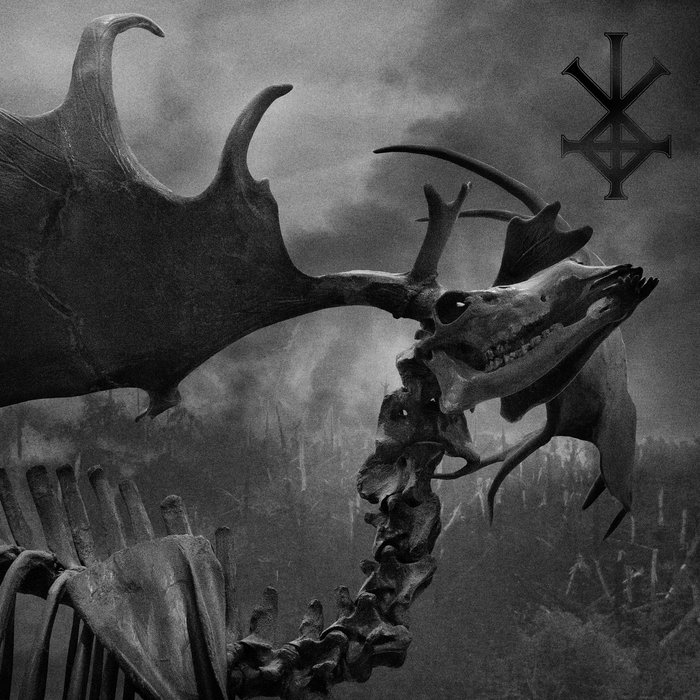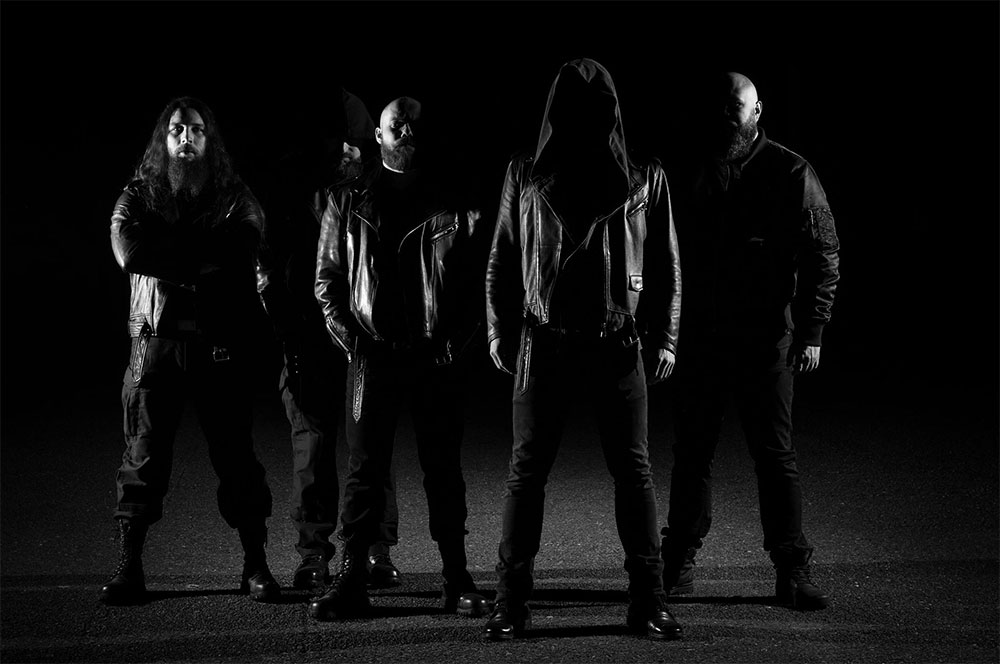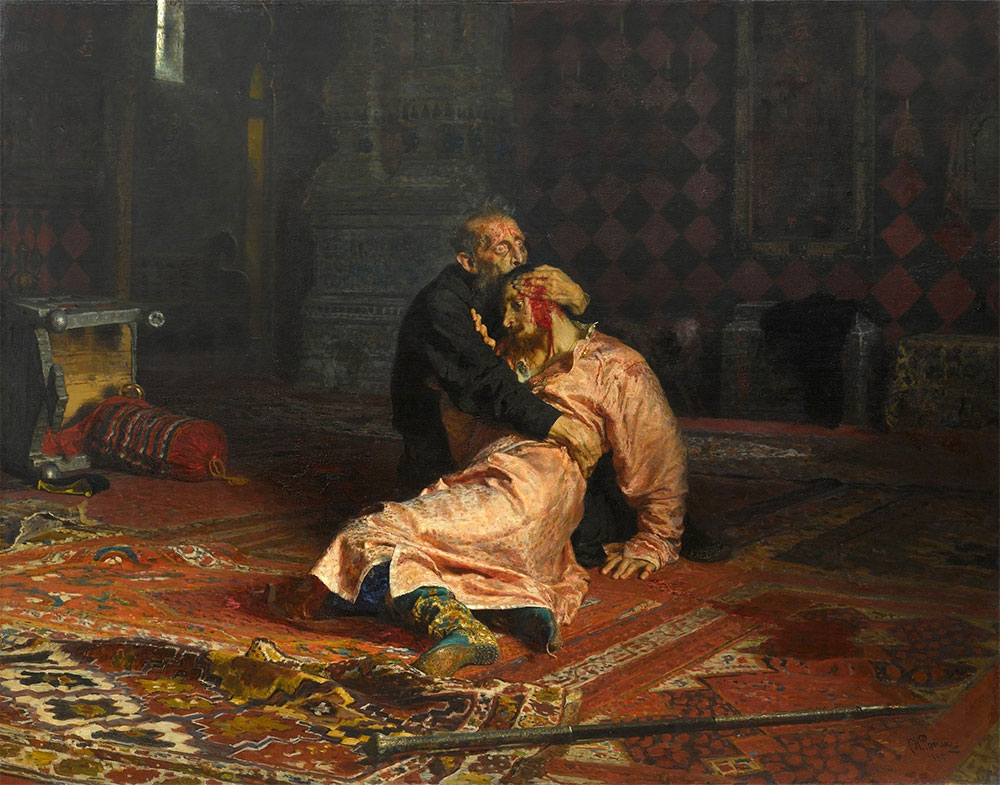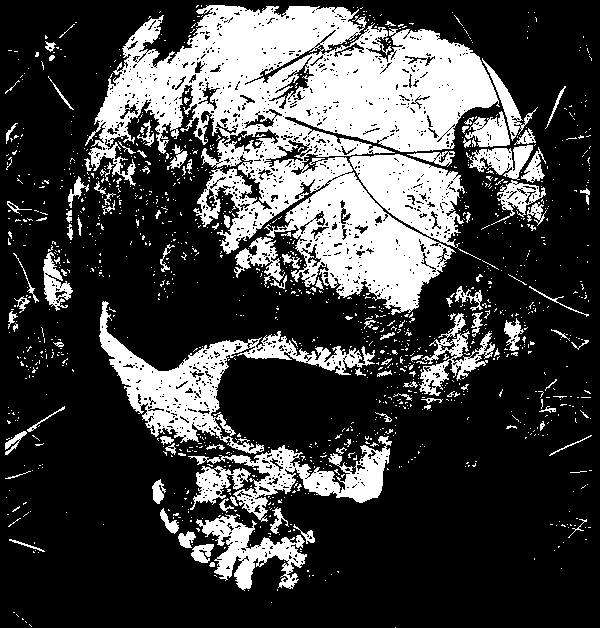Outre
2019-01-23
Polish black metal band Outre has diagnosed humanity as a malignant infestation. To illustrate, bass player and cultural anthropologist Marcin Radecki narrates our historical exploration of man’s proclivity for wreaking havoc upon his surroundings.
– Our dissonant elements are often emphasised but, while I don’t dispute them, I think calling OUTRE dissonance-only is quite misleading. We put a lot of effort into other aspects and try to make our music multidimensional. It takes a while to get through all the layers – what you notice first when listening to “Hollow Earth” is blast beats along with a thick wall of down-tuned guitars. This low tuning we used seems to have given people the false impression that we’ve moved towards a more death metal sound but I wouldn’t say we had any such aspirations. OUTRE is a black metal band and this is what we’ll stick to.
The new album was recorded at Impressive Art Studios in the south of Poland. The studio stands in a remote mountain valley, has no cell-phone connectivity, and is highly vulnerable to weather conditions.
– The solitude of its location definitely helped us. It’s good having the possibility to focus on recording and uninterrupted attention to work; this is what keeps you creative. The process was split up in several parts; we began by tracking the drums during our first visit, then the guitars and bass a few weeks later. The vocals were recorded in our rehearsal room, with mixing and mastering handled remotely.

The cover for “Hollow Earth” – a title which has nothing to do with the conspiracy theory bearing the same name – depicts fossils of a megaloceros, an extinct genus of Ice Age deer. Marcin says their choice of artwork reflects OUTRE’s rather dark view on humanity, classifying us an invasive and likewise parasitic species – one that’s about to be dealt the mother of all bitch-slaps by the hand of nature.
– Just take a look around you. Humanity has been the driving force of destruction for so many years, focusing on completely unimportant matters and measuring our wealth based only upon what we have instead of who we are. Production, consumption, instant gratification; more, faster, better. We keep demanding instead of asking, what do you think lies at the end of this road?
Marcin recalls how his hometown, Katowice, recently hosted COP24, which is the informal name for the 24th Conference of the Parties to the United Nations Framework Convention on Climate Change.
– Thousands of people – leaders, politicians, environmental activists – all deliberating on the future and how to mitigate the destructive impact of our current attitude towards life. I’m not sure if they really can’t see the root cause or simply don’t want to see it, given how they’re attempting to resolve problems that in themselves are just logical consequences of our consumption culture. We’re on the road to perdition but don’t know how to turn back.
We can at least glance backwards. Marcin mentioned in earlier conversation that he graduated in Russian anthropological culture studies – I found this to be an interesting choice for a Pole, given the colourful history between the two nations.
– I had a very good Russian teacher back in high-school. I come from the generation where studying Russian was on a voluntary basis but neither of my parents had any choice in the matter since it was mandatory during the communist era here in Poland. I’ve always been fascinated with Russia – while sharing our Slavic roots, they differ from us on so many levels. For the longest time, they weren’t at all Westernised and so remained free from the main Latin cultural influences. Those who speak Russian might notice how their approach to life differs from ours; for example, the matter of belongings is treated completely differently. While we say, for example, ‘I have a bass guitar.’, they say ‘The bass is with me.’ In direct translation it may sound strange but this is quite telling of their approach to material possessions. Of corse, I could talk a lot more about this but I don’t want to dominate our conversation with the ‘Russian soul’.
I actually found this really interesting so if you have anything further to add then by all means…?
– Well, the concept ‘Russian soul’ is very hard to explain and has no unequivocal definition. Some Russians call it a bullshit term made up by Western anthropologists and historians. However, I define it as an amalgamation of features and attributes of character and mentality that arose throughout the nation’s long history. Other strong factors are geographical position, Byzantium and Greek Catholic religion and, of course, landmark historical events such as the Mongolian slavery, the times of Tsar Ivan IV, Westernisation under Peter I, the Great Revolution, etcetera.

Back in the 11th century, today’s Russia was part of Kievan Rus – a provisional federation populated by vast numbers of East Slavic and Finnic tribes. After generations of constant warring and bickering between the princes of various cities, Kievan Rus had finally seen stretches of relative peace and stability under the rule of Grand Prince Yaroslav the Wise. Before passing away in 1054, Yaroslav assigned to his sons various princedoms, hoping the bonds of bloodline would keep the nation together. Alas, this was mere wishful thinking – once their father died, the princely offspring were at each other’s throats and Kievan Rus was again marred by internal strife, all the while dealing with marauding steppe tribes from the surrounding areas. Thus, it was a federation amidst great disarray that in 1219 received envoys from the Mongols, who had recently fallen upon the neighbouring tribal confederation of Polovtsy. Bear in mind that the Mongol Empire was once the mightiest force on earth, at its peak it stretched from Eastern and parts of Central Europe to the Sea of Japan. They expanded into Siberia to the north; then Indochina, the Iranian Plateau, and the Indian subcontinent to the east and south, and all the way westwards to the Levant and the Carpathian Mountains. A council of princes received the emissaries, who assured them that the Mongols bore no ill will towards Kievan Rus and desired only continued peace. In what is perhaps one of history’s most illustrative examples of miscalculated diplomacy, the princes simply murdered the envoys. The furious but calculated response came almost twenty years later when Batu Khan, grandson of Genghis Khan, marched the 200,000 strong Golden Horde from Mongolia and fell upon the fractured principalities, one by one. All the great cities, including Moscow and Kiev, were razed and their population either put to the sword or taken as slaves. Civilian casualties are estimated to be about half a million – seven percent of the entire population – but does not include those who were enslaved. As devastating as this sounds, they got off lightly compared to Hungary who lost about half of its two-million populace to the Mongols. If I’m not mistaken, this was the last time a foreign power conquered Russia on her own soil.
– Well, there was a short episode in the 17th century when Poles invaded the duchy of Moscow and managed to impose the reign of King’s Vladislav IV. Other than that, most of the times it was Russia who played the role of invaders. But we must remember that the Mongol occupation lasted nearly two hundred years, depending on which historical events are taken into account as starting and ending points. After the fall of Chanat and Mongolian power, Russian duchies had no natural enemies; or at least none that could put them in serious danger.
As could be expected, the Mongol subjugation wrought numerous unimaginable implications upon the entire region, such as the creation of Ukraine and Belarus. One interesting ramification is how it served to empower the Orthodox Church since the Horde, as the Mongols were called in Russian chronicles, was generally regarded as divine punishment on a nation of sinners.
– The Orthodox Church played a major role in the process of building the fundaments of Russian statehood by strongly promoting the messianic role of Moscow as the bearer of true and uncontaminated Orthodox faith – which is what justified their own expansion into other territories. This comes down to the concept of Three Romes, describing Moscow as the third and final. The first two, the actual city of Rome and then Constantinople, are said to have fallen due to heresy and betrayal of real Christian faith. Moscow was meant to be the last Rome. Of course, all of that had its deep political background for making alliances against the Latin west.
Even though the annals of history are full of murdering monarchs, Russia seems to have a special knack for producing ones whose whimsical homicides render gargantuan ramifications. The aforementioned Tsar Ivan IV, also known as Ivan the Terrible, is a fine candidate. Despite his rule seeing the first fully functioning and centrally administered Russian state – as well as having brought Russia closer into the European fold – his legacy also bears a number of less than flattering connotations. In 1538, at eight years of age, Grand Prince Ivan of Moscow became an orphan after his mother died, allegedly by poison. This set off a power-struggle amongst the nobility who all vied for influence over the young prince by way of intrigue and assassination, a dirty game which went on until Ivan came of age in 1547 and was proclaimed the first tsar of Russia. Witnessing such behaviour first-hand throughout his entire adolescence left the new tsar with a lifelong loathing for noblemen and their petty games of politics, something which would also come to colour his policies. One such edict was that of the oprichnina, a state campaign lasting from 1565 to 1572 which targeted primarily Russian aristocrats; confiscating land and property as well as staging public executions. In 1581, Ivan suffered a fit of rage during which he swung his sceptre and cracked the skull of his son and heir apparent, Tsarevich Ivan Ivanovich, leaving the dim-witted younger offspring Feodor next in imperial succession.
– The times of Tsar Ivan IV were very interesting. On the one hand we have the tyranny, merciless assaults, and oppression such as oprichnina but there were also plenty of reforms in areas of law, administration, military and so on. Printing – one of the milestones in mankind’s history – appeared in Russian territory during Ivan’s reign. Eventually, the tyranny prevailed and led the country into chaos. The episode you mention, killing his own son, was some kind of manifestation of certain aspects of the Russian soul: unpredictability, cruelty, violence… generally, the dark side that occasionally rears its head.

When Feodor Ivanovich, last Russian tsar of the Rurik Dynasty, died in 1598 it set off what’s now known as The Time of Troubles. This is an era in which Russia was plagued by numerous civil uprisings and usurpers, all the while fighting destructive wars with Poland as well as suffering a famine which killed one third of the population. The Troubles came to an end with the 1613 crowning of Michael of Russia, the first of many tsars from the House of Romanov. Upon assuming rule, his grandson, Peter I, immediately began travelling Europe to educate himself in matters of statehood and warfare. After battling the Turks in 1695, Peter realised how weak the Russian navy was; military commanders were dispatched to many of the contemporary maritime powers of Europe with orders to document and gather as much information as they could. Meanwhile, the ambitious tsar intensified his own education – studying European financial, religious, and military policies and strategies. Come journey’s end he was determined to modernise his entire nation along with its customs, by force if need be. The Julian calendar, which the rest of Europe had adopted, replaced the old Russian one. Peter began commissioning portraits of himself decorated with bombastic Western imagery, taking a cue from the Romans in trying to associate his person with the strong and powerful. He also decreed that all Russian men must shave off their customary beards, going so far as instituting a special tax for those who refused. The parliamentary system also saw a number of important reforms which allowed commoners to rise in rank and attain the title of nobles.
– As for whether this ultimately benefitted the nation or not, one can always perform intellectual exercises of presenting alternate history lines and many did; we can only speculate how events might have played out if things happened differently. I believe the reforms of Peter I were good but, as per usual in Moscow, introduced by force instead of through democratic process. That’s a significant observation concerning all of Russian history – all major changes were brutally imposed, not given. In modern times, Stalin is said to have created the ‘cult of the individual’ but, in my opinion, this happened hundreds of years before in the time of the first tsar. Millions were ruled by individuals and while we may say it ended in Europe around the time of the French Revolution and later, in Russia it still persists to this day.
The last landmark event Marcin mentioned was the Great Revolution of 1917, which ultimately toppled the tsarist autocracy and gave rise to the Soviet Union. Setting the stage was the uprising of 1905, later referred to by Lenin as ‘the Great Dress Rehearsal’ without which the 1917 coup would never have been possible. A wave of social and political unrest swept across the country – labour strikes, discontent among the peasantry, and military mutiny – ultimately ousting the government and leading to the foundation of the State Duma, a new parliamentary system, as well as the Russian Constitution of 1906. The tsar managed to cling on to his rule for another twelve years until, amidst growing turmoil after heavy setbacks in World War I, Emperor Nicholas II was forced to abdicate following the February Revolution of 1917. The former tsar was later executed along with his family, putting a final end to the Romanov Dynasty. His removal left a provisional government at the helm, rulers in name but largely at the mercy of various assemblies of grassroots community activists, the Soviets, whose main cadres were made up by soldiers and labourers. The leading faction within the Soviets were called the Bolsheviks, a revolutionary socialist bloc led by Vladimir Lenin. A few months later came the October Revolution when an armed Bolshevik militia overthrew the provisional government in nowadays S.t Petersburg, transferring power and authority to the Soviets in Moscow. Shortly afterwards, civil war erupted on multiple fronts both between counter-revolutionaries and Soviets as well as within the socialists ranks. When the dust settled, the Bolsheviks had vanquished all foes and emerged as conquerors. They rebranded themselves as the Communist Party and established the Union of Soviet Socialist Republics (USSR) in 1922. Just looking at the timeline, it’s pretty astounding the amount of turmoil an ordinary Russian citizen born around the turn of the century must have gone through. Two world wars, two revolutions, and civil war.
– Don’t forget what followed, nearly seventy years of communism in its hardest form; concentration camps existing for all this time, omnipresent control, terror, and censorship. The 20th century was a great culmination including internal and international events to cause such effects and impressions you mentioned. Nevertheless, I doubt that’s what made Russians tough people. I believe the main reason behind this nation’s current shape is the complete lack of development in civil society over the centuries. There’s a lot of bad which could be said about our current Western democracy but I feel it definitely has a few positive sides – in Russia, that grain never fell on fertile soil. The people were ruled by force, sometimes very cruelly and violently, rather than being encouraged to make their own decisions and think for themselves.

Marcin wrote his master’s thesis on the Holodomor, a Ukrainian word meaning something like ‘to murder with hunger’, which was a man-made famine that during 1932 to ‘33 claimed the lives of up to seven million Ukrainians. Researchers believe the main purpose was that of pacifying resistance against the newly implemented and wildly unpopular Soviet collectivisation policies, which basically entailed the state seizing land and livestock and then forcing the previous owners to work the farm as employees. Similar measures around the same time inflicted comparable results in other parts of the USSR, such as Kazakhstan, Crimea, and the Volva region. It’s been estimated by historians that at no previous time in human history has cannibalism been so rampant as during the Holodomor. Hungarian-British journalist Arthur Koestler later described the horrific scenes he witnessed: ‘At every station there was a crowd of peasants in rags, offering ikons and linen in exchange against a loaf of bread. The women were lifting up their infants to the compartment windows – infants pitiful and terrifying with limbs like sticks, puffed bellies, big cadaverous heads lolling on thin necks.’ In 2006, Ukraine along with fifteen other countries – Poland being one of them – acknowledged the Holodomor as a genocide against the Ukrainian people. Marcin notes that despite the scope of its devastation, the event is still not widely known.
– I was always interested in history, especially great events which heavily influenced the mentality of a nation. Holodomor was one such tragedy that’s had a massive impact on the Ukrainians and who they are today. My wife’s family came to Poland from Ukraine in the late 50s – some of them settled in Silesia, where we live, while others moved further West and now reside near Wrocław. Although none of them lived during the time of Holodomor, they lost their relatives during this time and all know stories which are truly hard to believe. It’s still very much alive in their minds. In my thesis I focused more on the psychological aspects rather than historical – I studied how the collective reacts in the face of great tragedy, how slow and painful execution kills not only bodies but also spirit.
In this context, as with all previous events we’ve explored, it’s interesting to bear in mind how severe trauma such as warfare, starvation, slavery, and acute poverty can cause epigenetic DNA changes which are then passed on to one’s children; the proper term is transgenerational trauma. For example, studies have shown how survivors of childhood sexual abuse can, as a result of unprocessed emotional pain, carry their experiences over to the next generation – in turn causing feelings of distrust, loneliness and isolation.
– Speaking about what influence something like a genocide by mass-starvation has on national mentality would be almost too easy, it’s such an obvious fact. The real struggle is how to process something like this and return to normal living. The problem we face in this case is the time needed to overcome it. Ukraine was a Soviet republic for numerous years after these events and at least three generations lived in a reality of unexamined and unprocessed deep trauma. I’m no psychologist but such recovery is not a matter of weeks or months, it takes dozens of years. Any historical research was banned or very difficult to conduct up until the 21st century. Even now it’s not easy to speak about the Holodomor on former USSR territory, many Ukrainian scientists publish papers or give lectures about it abroad but their voices are weak and do not get wider audience or raise enough awareness. So, the problem certainly isn’t solved and the case can’t be considered closed.
Phew – what’s next for OUTRE?
– At the moment, we’re working on the promotion for “Hollow Earth” – live activities are planned for 2019 but it’s too soon to make any announcements. We’ve already started to think about the concept of our new album, which will be left to let grow inside us.



